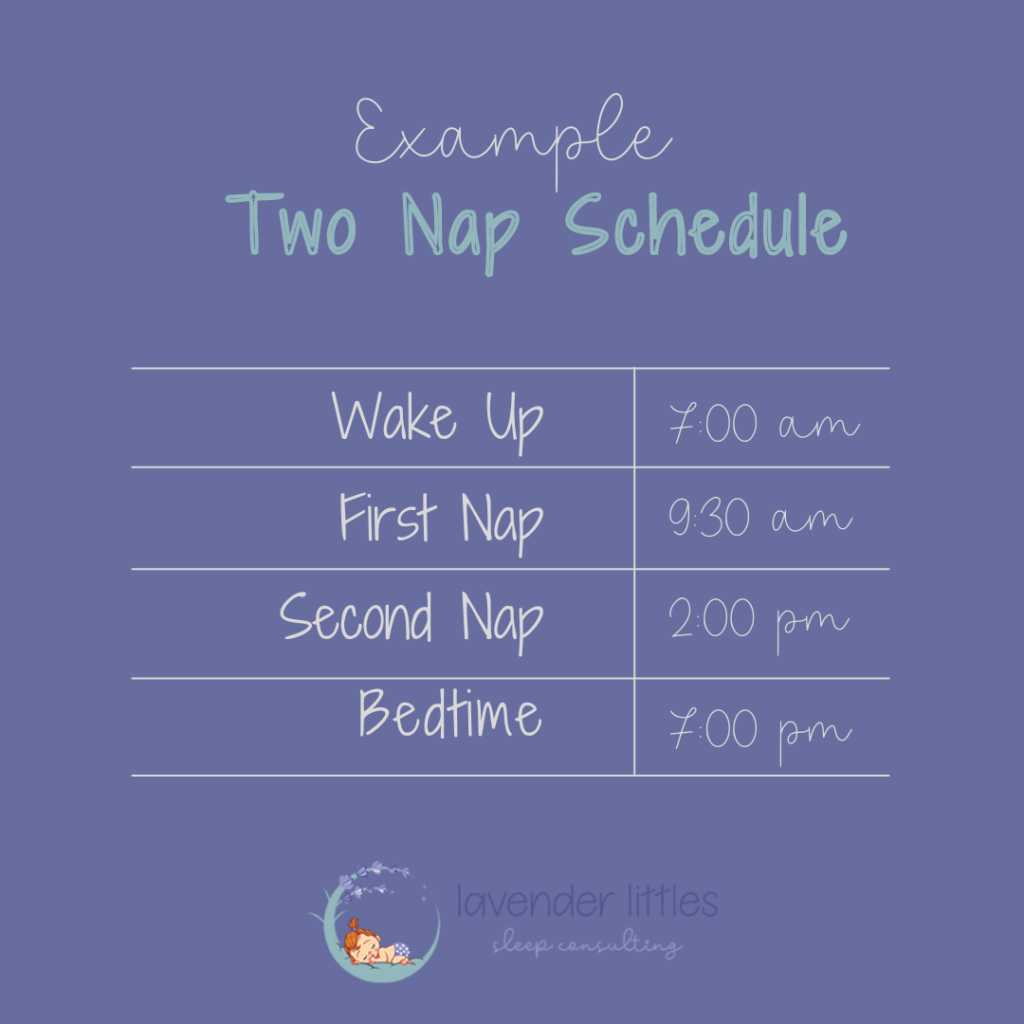
When to Move to a Set Schedule
Here’s the scoop! Following age-appropriate wake windows is one of the most important things you can do to establish happy, healthy sleep for your baby. I took me TOO long to learn this important concept when my daughter was a baby. I often wonder how much easier those early months could have been if I would have known this important concept.
Let’s dive into what you need to know about a wake window schedule and how and when to move to a set schedule.
What is a wake window?
A wake window (A.K.A awake windows) is the amount of awake time your child can handle before needing to go to sleep again. Wake windows differ slightly from one child to another but are very much based on your child’s age.
If your baby was born premature, use their adjusted age to calculate their wake window.
When to use a wake window schedule
A wake window schedule serves your baby best during the early months. The first six months or so.
In those early months, naps are so unpredictable that it’s too hard to create a set schedule for a baby without risking overtiredness.
Until naps become more predictable, you will want to use a wake window schedule. Yes, it can be exhausting constantly calculating wake windows but it’s worth it to give your baby the sleep they need. You can use an app like Huckleberry to keep track of sleep (and diaper changes, feedings, etc.)
When to move to a set schedule
Whichever of these two scenarios comes first is when it’s time to move to a set schedule:
- when your baby is taking two predictable naps each day. Naps that are each at least an hour in length and this been the norm for at least two weeks.
- 9 months old.
How to move to a set schedule
Whether your baby starts to take predictable naps on their own or as a result of sleep training, the transition mostly happens on its own. However, naps aren’t the only piece of your child’s schedule. When starting a set schedule, you also need to make sure that baby is waking for the day at the same time each day as well.
Without a consistent morning wake time you won’t be able to set nap times or bedtime effectively. This means that you may need to wake your child up if they are not awake by their set wake time.
Now I know you are wondering what happens if my baby wakes BEFORE their set wake time. Well, on those days you will need to push them a little bit to get them to their set nap time (or at least as close as you can). If early mornings are becoming a persistent issue, check out my blog on how to overcome those pesky early mornings.
If your baby has not started taking predictable naps by 9 months old, you will need to give their body a little push towards this shift. And the first step to doing this is setting a morning wake time. Track sleep for a week or so to find your baby’s most natural wake time.
I know that you want your baby to sleep until 9am but that just not realistic for most children. The majority of children will wake between 6-8am. If the natural wake time is before 6am, check out those blogs on early mornings because you shouldn’t consider morning anytime before 6am.
Once the wake time is set, you will move on to setting the nap times and bedtime. Here is an example of a two-nap schedule:

When I am working with a client in the 6-8 month age range and we aren’t seeing progress with lengthening naps, I will often advise a set schedule. It’s not an overnight solution (because nothing is) but with consistency, the baby’s body starts to respond to the predictability, and we start to see naps lengthen.
Why should you move to a set schedule?
The human body thrives on routines, schedules, and consistency. Your baby has specific sleep and nutrition needs. Setting the body clock through a predictable schedule ensures that your baby is meeting those needs. The body responds well when it eats and sleeps at the same times every day.
When each day is different, it’s harder for the body to operate at peak capacity. Whereas predictable eating and sleep patterns allows maximum energy, immune repair, and metabolism.
And as an added bonus it also makes things less stressful for you when you know what your baby’s sleep will look like each day.
Sleep is complex and no two children are the same. If the idea of moving to a set schedule feels too overwhelming for you, you do not need to do it alone. Book your free evaluation call with me, and we can do it together.



